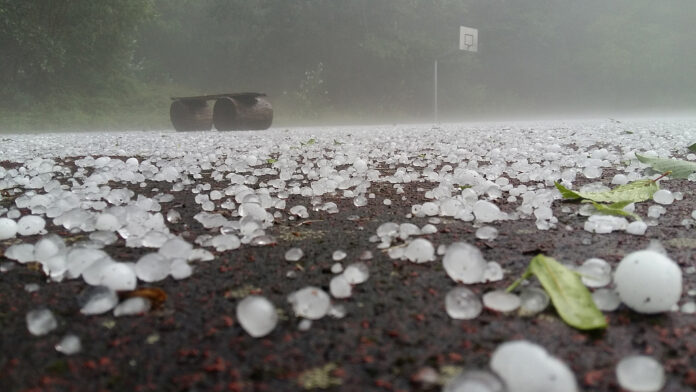Tropical Storm Rafael is intensifying in the Caribbean Sea and is projected to become a hurricane by Wednesday, bringing potentially destructive winds, storm surge, and heavy rainfall across the region. As of Tuesday morning, Rafael was located approximately 105 miles south-southwest of Kingston, Jamaica, and 265 miles southeast of Grand Cayman, according to the National Hurricane Center (NHC).
The storm is anticipated to bring severe weather impacts first to Jamaica and the Cayman Islands beginning Tuesday, followed by western Cuba on Wednesday. Parts of the Florida Keys may experience effects by Wednesday evening.
Hurricane warnings are now in effect for the Isle of Youth and multiple Cuban provinces, along with the Cayman Islands. The NHC advises that hurricane-force winds could impact parts of the Cayman Islands by Tuesday afternoon and reach western Cuba by Wednesday. Tropical storm watch alerts were also issued for the Florida Keys on Monday, adding to existing warnings for Cuba, Jamaica, and the Cayman Islands. Rainfall between 1 to 3 inches is expected in the Keys, with gusty winds accompanying the storm.
Rafael formed in the Caribbean on Monday afternoon, according to the NHC. The storm has raised concerns about possible flooding and landslides, especially in Jamaica and Cuba, where heavy rain is forecast through midweek. Rainfall of 3 to 6 inches is expected across western Cuba and the Cayman Islands, with localized totals of up to 9 inches in parts of Jamaica and Cuba’s mountainous areas.
Schools in Jamaica are closed Tuesday as a precaution against severe weather, CNN affiliate Radio Jamaica News reported. Meanwhile, residents in the northern Gulf Coast are advised to monitor the storm closely as its path could shift, potentially altering flood risks in Florida and the Southeast later this week.
Forecast models diverge on Rafael’s path, with some suggesting landfall in western Cuba followed by a northwest turn toward the U.S., while others predict a leftward turn in the Gulf, possibly weakening the storm before impacting northeastern Mexico.
The NHC forecasts “steady to rapid intensification” as Rafael approaches the Cayman Islands and Cuba. The storm is expected to reach at least high-end Category 1 strength at landfall in Cuba on Wednesday.
Despite the usual decrease in tropical activity in November, storms can still form, and landfalls in the U.S. are rare this late in the season. Hurricane expert Michael Lowry noted that 98% of named storms making U.S. landfall occur before November.
As Rafael approaches, it will create rough seas and dangerous storm surges, with expected inundation up to 3 feet in the Cayman Islands and up to 9 feet in parts of western Cuba above normal tide levels.
Here are the key points:
- Tropical Storm Rafael Intensifies: Rafael is strengthening in the Caribbean and is expected to reach hurricane strength by Wednesday.
- Projected Path and Impact: The storm is anticipated to affect Jamaica and the Cayman Islands on Tuesday and reach western Cuba by Wednesday. The Florida Keys may feel effects by Wednesday evening.
- Hurricane Warnings Issued: The Isle of Youth, several Cuban provinces, and the Cayman Islands are under hurricane warnings, with potential hurricane-force winds impacting these areas by Tuesday afternoon.
- Rainfall and Flooding Risk: Jamaica, western Cuba, and the Cayman Islands could see 3 to 6 inches of rainfall, with localized areas receiving up to 9 inches, raising the risk of flash floods and landslides.
- School Closures in Jamaica: Schools in Jamaica will remain closed for in-person classes on Tuesday as a precaution.
- Storm Surge Warning: Rafael is expected to cause storm surges, with water levels potentially reaching up to 3 feet in the Cayman Islands and 9 feet in parts of western Cuba.
- Uncertain Trajectory: Forecast models show differing paths, with possible impacts on the U.S. Gulf Coast or northeastern Mexico, depending on Rafael’s trajectory.
- Late-Season Activity: Despite typically lower tropical activity in November, Rafael underscores the possibility of storms developing late in the season.



